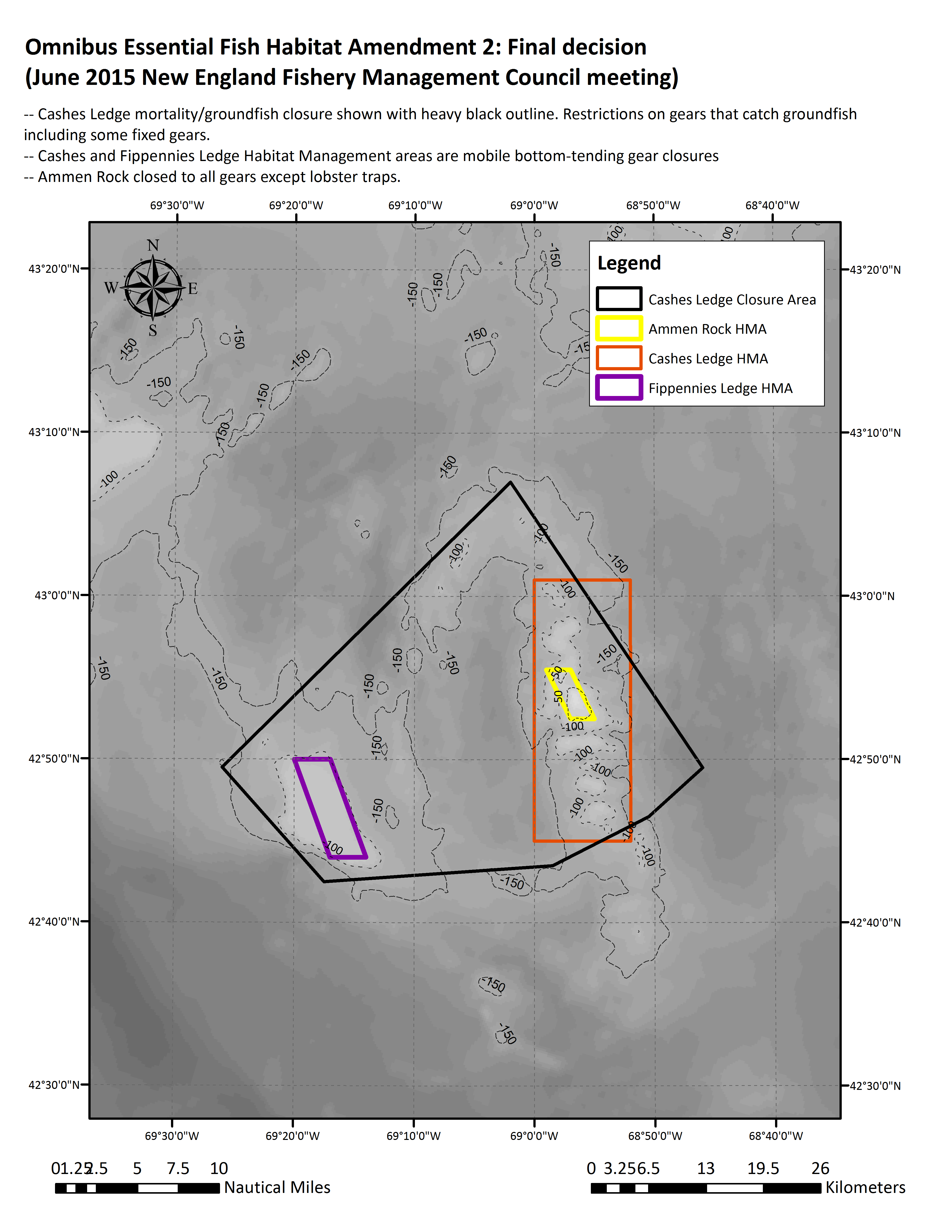ALEXANDRIA, Va. (Saving Seafood) – May 4, 2016 – The Atlantic States Marine Fisheries Commission (ASMFC) has taken a formal position on the possibility of a Presidential proclamation of an Atlantic Marine Monument.
The Obama administration, at the urging of major environmental groups, is considering creating a National Monument in the New England Canyons and Seamounts region via the Antiquities Act. Few specifics have been released about what the monument would look like, but it could have significant negative impacts on fishermen in the affected areas.
The ASMFC’s Interstate Fisheries Management Program (ISFMP) Policy Board unanimously (with three abstentions) approved a resolution today drawing a line in the ocean (see map), in close proximity to the Atlantic canyons and seamounts off of Georges Banks, and urging that the creation of a monument only take place in a region seaward of that line. The ASMFC resolution urges that management of waters under Federal control from the coastline to that line be managed under the Magnuson-Stevens Act.
The resolution states:
- That it is the preference of ASMFC that the current New England Fishery Management Council coral management process continue without a Presidential proclamation on the issue;
- That should the President decide to designate a deep-water marine monument off the New England coast prior to the end of his Presidency, it should be limited to the smallest area compatible with the proper care and management of the objects to be protected, as required by the Antiquities Act;
- That the area be limited to depths greater than approximately 900 meters and encompass any or all of the region seaward of the line (see map) out to the outer limit of the EEZ;
- That only bottom tending fishing effort be prohibited in the area and that all other mid-water/surface fishing methods (recreational and commercial) be allowed to continue to use the area;
- That the public and affected user groups be allowed to review and comment on any specific proposal prior to its implementation.
The motion was initially crafted by members of the ASMFC Rhode Island Delegation, in consultation with other regional fisheries organizations. ASMFC’s Lobster Board, where the resolution originated, gave its unanimous approval to the proposal at its meeting on Monday.
In a letter this week to the ASMFC American Lobster Management Board requesting guidance on the monument issue, Board Chairman David Borden wrote about the potential consequences a monument would have for commercial and recreational fisheries in the area.
“The economic impacts of a potential Monument designation would undoubtedly be significant depending on where the boundaries are set. These economic impacts would be felt coast wide as the fishing fleets working in and around the canyons hail from ports across New England and the Mid-Atlantic.”
Specifically highlighted are the potential impacts on the offshore lobster and crab fisheries, which would be hurt by the prohibition on fishing in the monument area, or by being displaced into nearby fishing grounds. Lobster and Jonah crab revenue from Southern New England are estimated at $38 million per year. A monument designation could also hurt the lobster stock by pushing fishermen from areas where lobster is abundant into areas where lobster is more depleted. Concerns were also voiced about potential negative impacts of the proposal on whales and protected species.
Additionally, many of the States represented on ASMFC have major interests in finfish, pelagic longline, squid, and red crab fisheries, or have large recreational fisheries. “All of these fisheries could be directly affected by a closure or indirectly affected by a redirection of effort.”
According to ASMFC Chairman Doug Grout the ASMFC leadership plans to meet with representatives of CEQ next week to discuss ways to mitigate impacts on commercial and recreational fisheries.
About the ASMFC
In the early 1940s, recognizing that they could accomplish far more through cooperation rather than individual effort, the Atlantic coast states came together to form the Atlantic States Marine Fisheries Commission. An Interstate Compact, ratified by the states and approved by the U.S. Congress in 1942, acknowledged the necessity of the states joining forces to manage their shared migratory fishery resources and affirmed the states’ commitment to cooperative stewardship in promoting and protecting Atlantic coastal fishery resources.
Read a letter from ASMFC Lobster Board Chairman David Borden to the ASMFC Lobster Board



